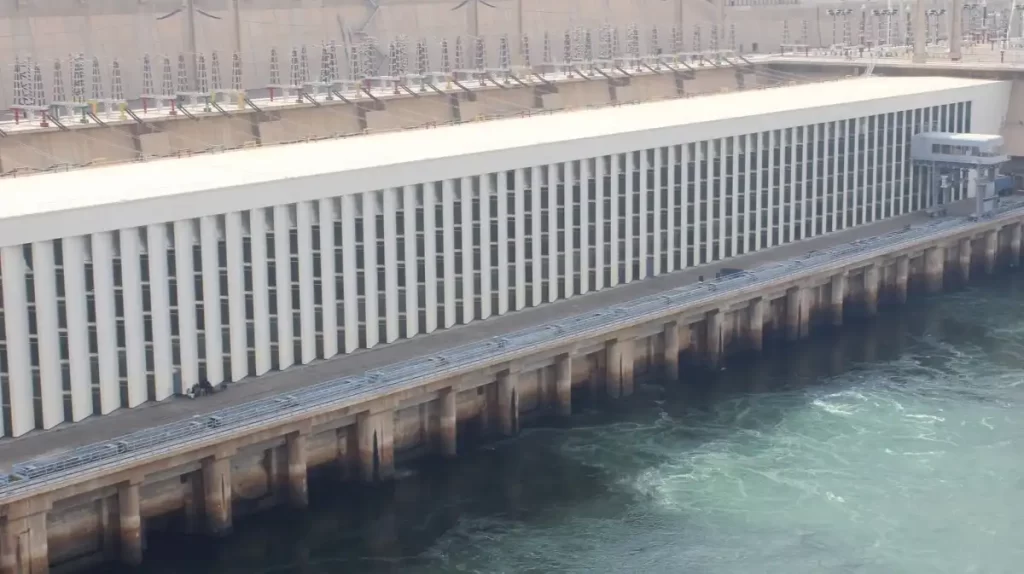
Aswan High Dam
[ez-toc]
The construction of the Aswan High Dam gave the Egyptians the means to enter the industrial era, control Nile floods, and acquire new wealth and power. One of Egypt’s most significant historical accomplishments is the High Dam of Aswan. It served as the 1952 revolution’s symbol for the New Era. Egypt received electricity and water from it, and it was spared from inundation. One of the most recent wonders to be added to Aswan’s golden metropolis is the High Dam, which has helped Egypt soar to new heights and take a significant step forward.
The Aswan High Dam’s History
There have been numerous attempts to build a dam in Aswan throughout Egypt’s history. For example, in the ninth century, during the rule of the Fatimid Caliph Al-Hakim Bi-Amr Allah, a polymath and engineer by the name of Ibn al-Haytham tried to control the flooding of the Nile by building a dam but failed. The high dam was started in 1912 AD by Greek-Egyptian engineer Adrian Daninos, but it wasn’t finished. After the 1952 revolution, Great President Gamal Abd El-Nasser gave the order to build the High Dam, but when the US and the UK refused to cooperate, he turned to the Soviet Union for their technological and financial assistance.
The construction project began on January 9th, 1960, and was finished in the spring of 1971. The High Dam project produced Lake Nasser, a magnificent lake straddling Egypt and Sudan. It is one of the biggest artificial lakes ever created, and it was created to hold water. It has a surface area of 5,250 square kilometers (2,030 square miles) and can hold up to 132 cubic kilometers (1.73 billion cubic yards) of water. The Egyptian government worked very hard to protect the Nubian monuments from the harm brought on by the rising water level.
The design of the Aswan High Dam
Aswan High Dam is 3,830 m (12,570 ft) long, 111 m high, and 980 m wide (3,220 ft). Its hydroelectric facility, which has six turbines and can produce 2.1 million kilowatts, along with its capacity to store up to 43,000,000 cubic meters (56,000,000 yds) of material make it one of the most significant sources of water and electricity in Egypt. The Soviet Union invested $1.12 billion in total at an interest rate of 2% in order to fund the construction of such a massive enterprise. It supplies water to Lake Nasser’s 33,600 km2 of irrigated land. It took a total of ten years to construct, 44 million cubic meters of building materials, and roughly 34,000 workers. A total of 12 Francis turbines with a 2,100 MW capacity are also part of the High dam and provide power for both domestic and commercial purposes.
The Aswan High Dam’s Effects
The High Dam was primarily built to control river flow, which resulted in delivering irrigation water for all of Egypt throughout the year. Having the option to travel across the Nile River while on Nile cruise packages also helped to boost tourism. 12 power turbines are fed by its water. Let’s classify the High Dam’s effects into the following groups:
The Economic Impact
Egyptians now have the capacity to regulate the yearly Nile flow thanks to the huge High Dam. It now makes use of floodwater to irrigate thousands of acres, enhance Aswan’s navigation, and provide the entire nation with electricity—up to 50% of total electrical production. Due to the availability of electricity, increased industrial activity and diversity assisted in the generation of hydropower. The dam provided irrigation water to 2 million Feddan (840,000 hectares) that were made available for producing different crops such as rice, wheat, cotton, and sugar cane as well as served as the new houses for 500,000 families, protecting Egypt from droughts.
The Social Impact
Because of the economic growth and improved level of living, the High Dam brought about peace and stability in the nation. Furthermore, it has helped with dispute resolution. The youth had a lot of options to improve their social standing and obtain new employment opportunities.
The Biological Impact
One of the negative effects of the High Dam was the introduction of the harmful infection schistosomiasis (bilharzia). It affected the vegetation and fauna and had an impact on fish output.
The Physical Impact
The great High Dam made a significant contribution to the reclamation of the desert, which greatly aided the growth of the agricultural industry. Waterlogging and soil salinity were altered. Both upstream and downstream of the dam, it altered the flow of the Nile. In both the River Nile and Lake Nasser, it induced sedimentation.
Fantastic Information about the Aswan High Dam
- During the development, more than 50,000 Nubians were relocated up to 45 kilometers from their original villages.
- You can see the High Dam being constructed during your luxurious Egypt trips. It took roughly ten years to finish.
- The Fatimid Caliph Al-Hakim Bi-Amr Allah assigned the duty of controlling the flooding of the Nile to a polymath and engineer by the name of Ibn al-Haytham.
- Adrian Daninos, a Greek-Egyptian engineer, proposed a design in 1912 to build the high dam, but King Farouk disapproved of the project.
- The High Dam was built by Gamal Abd El-Nasser since he was the one who genuinely desired to store Egypt’s water.
- The Soviet Union gave President Gamal $1.12 billion to build the dam because he needed assistance.
- Additionally, the dam shielded Egypt from the droughts that ravaged East and West Africa in 1972-1973 and 1983-1987.
- The High Dam caused the loss of flood sediments, which served as natural fertilizer, and the fall in fish output after it had an impact on the marine environment and ecosystem.
- The longest river in the world, the River Nile, is traversed.
- About half of Egypt’s total electricity supply comes from it.
- It produces roughly 10 trillion kilowatts of hydroelectric power each hour.
- Although a different team of Soviet Union engineers built this beautiful structure, British engineers designed it.
- Many Egyptian landmarks had to be relocated before the High Dam was built in order to protect them from flooding, much as Abu Simbel had to be relocated in order to remain in its original location. However, after the High Dam was built, everything improved.
- The High Dam was utilized to build Lake Nasser.
Lake Nasser
The transfer of 50,000 Nubians to New Nubia, a new community 45 kilometers from Aswan, was caused by the lake Nasser reservoir. The transfer of 22 sites, including the famous Abu Simbel and Philae Temple, with UNESCO’s assistance in the 1960s—the most challenging and costly archaeological rescue project in history—is the major drawback of the dam and the manmade lake.



